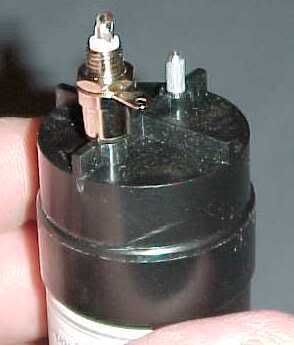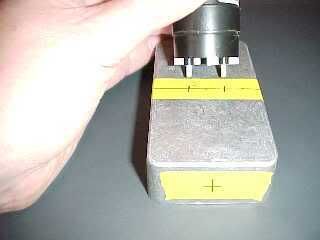MAKE A PYRO SYSTEM
This system is designed to accomodate the Le Maitre range of pyro effects which are widely used in the theatre, television and film industries. There is a proper firing system manufactured by Le Maitre which consists of a control unit and specialised pods to accomodate the cartridges, but many people simply cannot justify the large sum of money required for the official system.
A popular approach to firing Le Maitre cartridges on a low budget is to use terminal block to connect to the devices pins and a battery to fire it. This design is a more elegant solution to using these cartridges in a more controlled manner.
I must stress that these cartridges are extremely dangerous if used or stored in an amateur manner. All pyro equipment is capable of causing serious burn injuries, blindness or death if used without extreme care, so always use common sense when working with the equipment and if in doubt get someone with the appropriate skills to handle the task.
This design is not officially endorsed by Le Maitre and you build and use it entirely at your own risk. It is not suitable for the more forceful cartridges like large confetti canons which require a lot of support at the base. Use care and common sense when constructing the device.

The components required are commonly available from suppliers like Maplin Electronics. The hardest bit to get is the two position keyswitch that only allows the key to be removed in the off position. This is so that the key cannot be removed while the controller is in an armed state. I got the keyswitch from RS components. (stock No: 321-048)

The connection to the cartridges is made by two phono sockets with the pins making contact with the centre contact in each socket. There seems to be a wide tolerance between different phono connectors, and some have the centre contact mounted too far back to make reliable contact with the cartridge pin. It would be worth trying a few types to find which makes the firmest contact with the cartridge pins.
The phono sockets for mounting on flying leads are actually better for this connector, since they make a good firm connection almost as soon as the pins enter the socket. Unfortunately they don't mount as easily or solidly as the chassis connectors.

To start with, the aluminium case is marked and drilled for the two phono connectors and the 1/4" mono jack socket.

Once the connectors have been fitted the centre contacts of the phono connectors are wired to the mono jack socket with a couple of bits of wire. You may be able to see that I have sleeved the jack sockets pins with heatshrink to minimise the risk of them shorting against the case if the jack socket gets turned.

Once assembled, the flanged base is screwed to the pod and it is complete.

The circuit of the controller is very simple. Basically speaking it is a battery, keyswitch and fire button wired in series with the jack socket. An LED and resistor are wired across the fire button so that when armed a small current (10mA) will flow through the circuit to show that it is intact. The cartridge requires quite a high current to trigger it, so the LED current will not cause it to operate.

All that's left to make is the lead which is basically a bit of two core flex terminated in a mono 1/4" jack plug at both ends. The lead shown is five metres long and care should be taken not to use an excessive length of cable, since the current loss may make firing the devices unreliable due to the high lead resistance limiting the available current in the circuit.
It's best to use plastic shrouded jack plugs since the intense oxidising effect of pyro will quickly corrode exposed metal.

Here's the unit fitted with a cartridge and all lit up to confirm that it is ready to fire the cartridge. Obviously the cartridges should be fired at a safe distance from the controller, and as an added safety feature the jack plug at the controller end should be disconnected before an attempt is made to load a new cartridge.
Remember to handle these devices with extreme care. When firing a cartridge the opearator MUST have full view of the cartridge to ensure that actors in the vicinity of the effect are not at risk of injury.